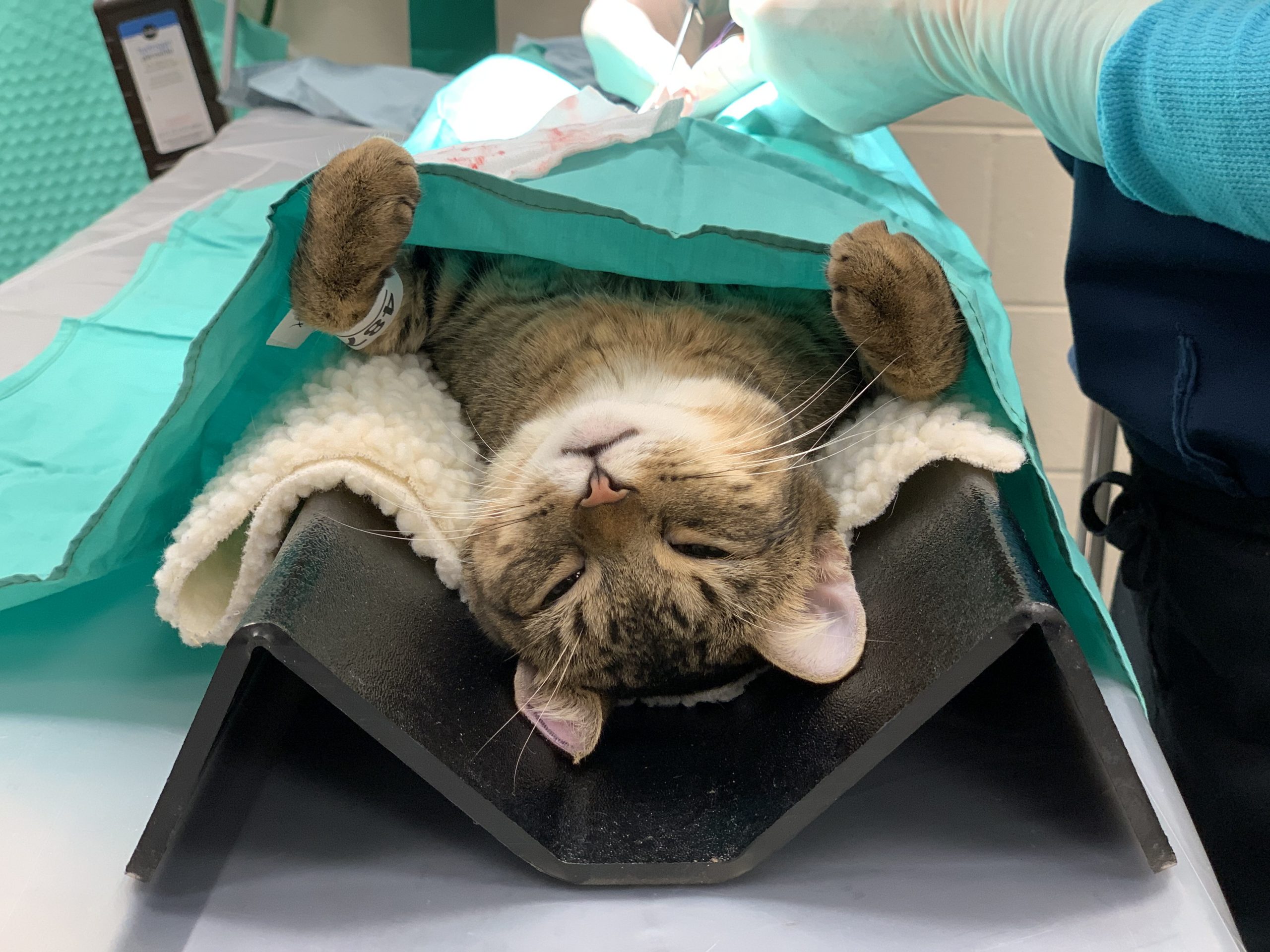Module 4: The Case of the Spay-Neuter Skeptic
Busy New Doctor
Dr. Newgrad is the sole, full-time veterinarian at a non-profit, limited-admission shelter. Her days are long, busy, and very rewarding. After six months in her new position, she is gaining confidence in both her medical and managerial responsibilities. Even so, her heart leapt into her throat when her Executive Director peeked her head into the OR, and asked Dr. Newgrad to stop by her office.
“Has something gone wrong? Did a recently adopted animal come down with parvo? Did the staff member who has been here for years complain about my decisions? Or maybe the board approved purchase of that new dental machine we asked for last year?” were all questions racing through her mind as she walked to the E.D.’s office.
The Meeting
“Ms. Rich, who has donated hundreds of thousands of dollars to our organization over the years, has her eye on the litter of 8-week-old pups that were just relinquished,” explained the director. “She would like to adopt one of the females, but she has heard from her groomer that sterilizing puppies can have negative long-term health effects. She is asking that we allow her to adopt the pup now without surgery. She offered to pay her own veterinarian to spay her when she is at least 8 months old. I told her that it was our policy to sterilize ALL animals prior to adoption, but she is asking why. I’d like you to meet with her to explain the rationale behind our policy.”
Nodding affirmatively and smiling weakly, Dr. Newgrad asserts that she would be happy to chat with the board member and begins to rise. “Additionally,” the E.D. continued, “Our board has decided to open our spay-neuter and wellness clinic to the public, and we are hoping that the local veterinarians will be supportive of it. I’d like you to draft a letter to your colleagues in private practice, to inform them of this decision.”
“I’m on it,” Dr. Newgrad thinks, as she leaves the E.D.’s office.
The Research
While walking back to her office, Dr. Newgrad vaguely recalled a number of spay-neuter studies discussed when she was in veterinary school. She’ll have to do some research of her own when she gets home, to refresh her memory. Dr. Newgrad’s phone buzzes in her pocket, with a reminder that tonight is the monthly get-together of the local shelter veterinarians. Hooray! She can ask her colleagues if they have come across similar issues with donors and board members, and if so, how they supported their decisions. One of these colleagues is very research-oriented, and will undoubtedly be able to provide Dr. Newgrad with the latest information in the field of spay-neuter. A spring returns to her step.
The Rationale for Shelter Policy
Throughout the remainder of the day, Dr. Newgrad thought about her training in veterinary school, and she recalls that the Association of Shelter Veterinarians Guidelines for Standards of Care in Animal Shelters has a section on spay-neuter. In that section it is noted that “performing spay-neuter prior to adoption ensures completion and reduces the risk of additional litters prior to surgery,” and “spay-neuter can be safely performed in healthy animals as young as 6 weeks old and as small as 1.5–2 pounds (0.7–1 kg) body weight.“
She reviews her shelter’s policies on pediatric spay-neuter, spaying and neutering all shelter animals prior to adoption, and their community cat diversion program. “Targeted spay-neuter” is likely to be a new concept for her colleagues in private practice. Dr. Newgrad decides to do some more research to enable her to write a succinct, yet effective letter to her colleagues, justifying her board’s decision to open a high quality, high volume spay-neuter (HQHVSN) clinic to serve the public, and hopefully winning their support.


